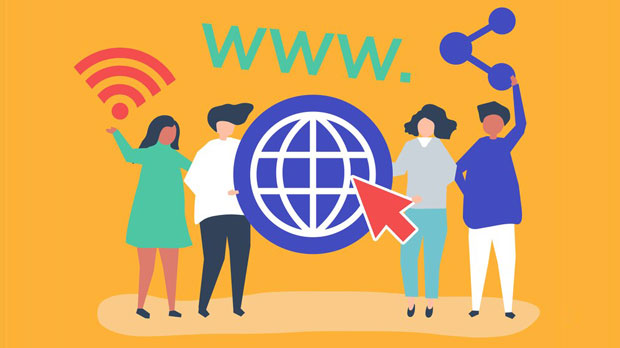The rise of online anonymity and privacy concerns has made residential IP addresses a key solution for individuals and businesses alike. In the context of the Philippines, PYPROXY offers a range of high-quality residential IP solutions, particularly focusing on top S5 proxy locations. This article delves into the practical applications of these proxies, highlighting how they benefit businesses in terms of security, performance, and reliability. By using residential IP addresses, businesses can bypass geographical restrictions, improve web scraping efficiency, and gain access to services that would otherwise be blocked in certain regions. The value of such solutions lies in their ability to simulate real user behavior, making them ideal for various online activities that require high levels of authenticity. Understanding Residential IPs and Their ImportanceResidential IP addresses are unique because they are assigned by Internet Service Providers (ISPs) to real residential locations, unlike data center proxies, which are hosted on servers. The primary advantage of residential IPs lies in their legitimacy; they appear as real users accessing websites, which greatly reduces the chances of being detected or blocked by security systems. For businesses and individuals operating in sectors such as digital marketing, data collection, or e-commerce, using residential IPs is crucial for ensuring that their online activities are indistinguishable from genuine user actions.One of the most notable features of residential IPs is their geographical diversity. These IPs allow businesses to access websites from various locations around the world, making it possible to simulate traffic from specific countries or regions. For example, if a company needs to gather data from Philippine websites, using residential IP addresses from the Philippines ensures that the traffic looks natural and is less likely to trigger anti-bot mechanisms.PyProxy and Its Role in Philippine Residential IPsPyProxy stands out in the Philippine market for offering top-tier residential IP solutions. This service provides access to a wide range of S5 proxy locations, allowing businesses to select IPs from specific regions within the Philippines. s5 proxies are often used in situations where high anonymity is required, and they are highly valued for their reliability and low risk of detection.One of the key features of PyProxy is its ability to offer rotating IPs, meaning that users are assigned a new residential IP address after every request or after a set time interval. This dynamic approach helps to ensure that users can maintain a consistent level of anonymity without being detected by website security systems. Furthermore, PyProxy’s infrastructure is designed to handle large-scale operations, making it ideal for businesses that need to carry out web scraping, ad verification, and other tasks at a high volume.Applications of PyProxy's Philippine Residential IPs1. Web Scraping: Web scraping is a powerful tool for gathering large amounts of data from the internet. However, many websites have security measures in place to prevent bots from scraping their content. By using residential IPs from PyProxy, businesses can bypass these measures and gather data without raising suspicion. For example, market research companies can scrape competitor websites to track prices, product listings, and customer reviews.2. Ad Verification: Digital advertising is a significant investment for many businesses, and ensuring that ads are being displayed correctly is crucial. Using residential IPs, businesses can verify their ads’ visibility in different regions, ensuring that their target audiences are being properly reached. With the ability to select proxies from specific geographic locations, PyProxy allows for highly accurate ad verification, which helps businesses optimize their campaigns.3. SEO Monitoring: Search Engine Optimization (SEO) is an ongoing effort that requires businesses to track keyword rankings, backlinks, and competitors' SEO strategies. Using residential IP addresses, businesses can monitor search engine results from multiple locations, ensuring they get an accurate representation of how their website ranks globally. This also allows companies to avoid penalties for using bot-like behavior, which can result from using data center IPs.4. E-commerce: In the e-commerce industry, product availability, pricing strategies, and promotions can vary by region. Residential IPs allow businesses to monitor how their products are listed across different marketplaces and assess the competition in specific markets. This can help e-commerce businesses stay competitive by ensuring that their listings are optimized for their target audience.5. Social Media Management: Social media platforms often have strict anti-bot measures to prevent fake accounts and automated activity. Residential IPs are essential for managing multiple accounts, running ads, and conducting marketing campaigns on social media. With residential proxies, businesses can create local accounts that mimic real users and avoid detection by platform algorithms.Security and Performance ConsiderationsThe use of residential IPs, particularly through services like PyProxy, offers a higher level of security compared to traditional proxies. Because residential IPs are associated with real households, they are less likely to be flagged as suspicious or blocked. This makes them ideal for tasks that require persistent and undetected access to websites.Performance is another critical factor to consider when choosing a proxy service. PyProxy’s residential IPs offer fast and reliable connections, ensuring that users can carry out their activities without delays or interruptions. This is especially important for businesses that rely on high-speed access for tasks like web scraping, data analysis, and ad verification.Additionally, PyProxy provides a high level of customer support to ensure that any issues encountered while using their service can be quickly resolved. Their customer service team is available to assist with troubleshooting, helping users to maintain smooth operations.The Future of Residential IPs in the PhilippinesAs the digital landscape continues to evolve, the demand for residential IPs is expected to grow, especially in regions like the Philippines where internet usage is rapidly increasing. Businesses in the Philippines are recognizing the value of residential IPs for online activities, from digital marketing to e-commerce.The future of residential IP services like PyProxy is promising, with more businesses likely to adopt these solutions to gain a competitive edge. As online security becomes increasingly important, the need for legitimate, untraceable IP addresses will continue to drive demand for services that provide reliable and diverse residential IP options.In conclusion, the use of residential IP addresses, especially through services like PyProxy, has become an indispensable tool for businesses seeking to enhance their online activities. Whether it’s for web scraping, ad verification, SEO monitoring, or social media management, residential IPs offer unparalleled advantages in terms of anonymity, security, and performance. For businesses operating in the Philippines, PyProxy’s top S5 proxy locations offer a reliable solution that can meet a wide range of needs, ultimately contributing to the success and growth of digital enterprises. As the demand for privacy and security continues to rise, services like PyProxy will remain at the forefront of online business strategies.
Nov 13, 2025



































































